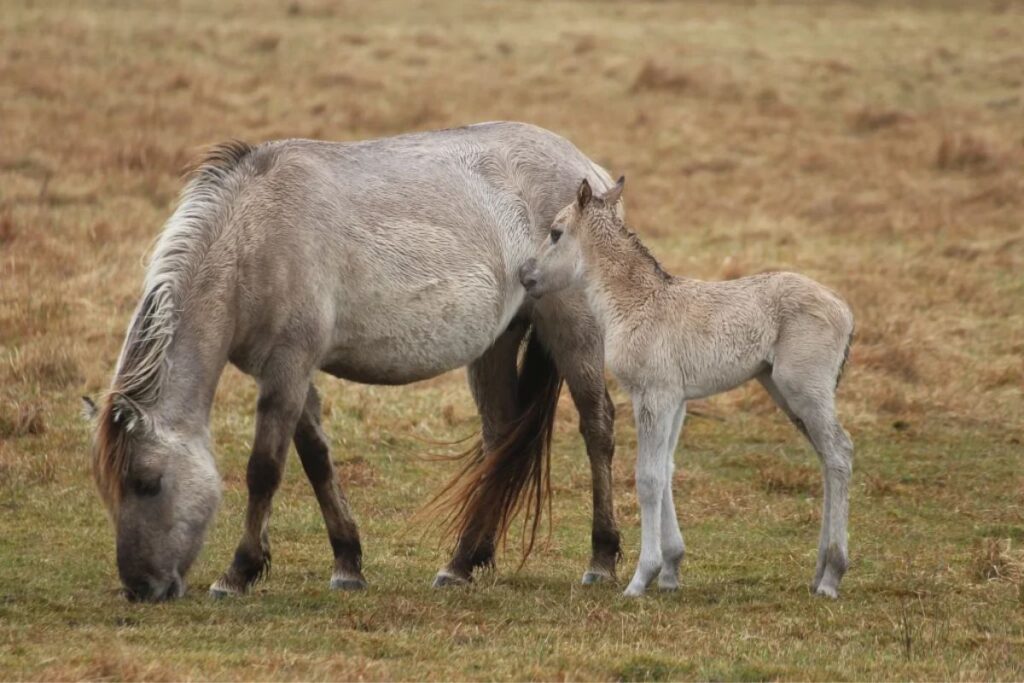Menu

It's true. Konik is Polish for "small horse." Although it is not a breed in itself, the name has come to describe a group of about five different horse breeds. But the horse that is usually referred to when saying "konik" is the direct descendant of an extinct horse breed - the tarpan.
The tarpan was an Eastern European wild horse that was hunted so much at the end of the 19th century that eventually none were left. Poland regretted this because even though there are no color photographs from that time, it is known that the tarpan was a very special horse breed, with an eel-like pattern on its back and zebra stripes on its legs. It is probably best known for being the great-grandmother of the Trakehner, which to this day is a noble and recognized riding horse with a large breeding association. The disappearance of the tarpan was the beginning of a breeding project in the Bialowieza forest.
Read also: Maremmana: The Calm and Intelligent
They were allowed to run freely in an attempt to preserve the tarpan's uniqueness. The tarpan had been bred with the strong, Arabian horse. And it went so well that the distinctive pattern has been preserved. In what is now a national park, the semi-wild descendants could run freely. In fact, they still exist there today. They thrive because they are hardy and can roam freely in all four seasons.
The breed has long been popular in Eastern Europe and has been used as the cornerstone of several breeds, including Hucul and Wielkopolski.

The Konik horse is clearly a strong pony. It has dense muscles, a relatively short neck, and a heavy head with a straight profile and a small muzzle. The ears are short and pointed. It has muscular pony legs and small, strong hooves. The mane is thick and full. The coat is usually mouse-gray or dun-colored, often with a beautiful bluish sheen, but there are also reddish-brown individuals. Tarpan's unique markings are also still present in some descendants. The height is between 127 and 137 cm.
Read also: Portrait: Dressage Star Jessica von Bredow-Werndl
"Mood and temperament vary greatly from horse to horse." The biggest differences are found when comparing the semi-wild population with tame counterparts. The tarpan's "wild" genes exist for better or for worse in some horses. They can be stubborn, flighty, and difficult to work with. That's a good thing in nature, but not so desirable in a pet. More on that later.
On the other hand, the more social individuals in this breed are perfect as family ponies. They are naturally curious and intelligent. Although the breed as a whole is slow to mature, a Konik is born with a strong constitution and can survive on very little food. The horse's personality reflects this trait. They are often both grateful and hardworking in the lighter side of agriculture. Unfortunately, this is a breed that tends to develop hoof-related problems, and because it is as frugal as it is, it is also a horse that easily gets accompanying diseases if it becomes overweight.
The Konik can be described as a real survivor horse. It has all the qualities required to survive in the wild and then some. If you want to see a Konik, it's not just in Poland that they can be experienced, as populations have been established in Holland, the UK, Germany, France, and Belgium. They are used, among other things, to improve threatened ecosystems. They eat plants, keep weeds down, and spread seeds from endangered plant life wherever they go.
And as there is an increasing focus on issues of biodiversity conservation, the Konik horse is becoming an increasingly popular choice for reintroduction into wild landscapes. Due to their natural hardiness and adaptability, Koniks are able to thrive in a wide range of environments, from forests to wetlands to open grasslands.
In addition to their practical uses in conservation and agriculture, Koniks are also beloved by many equestrians for their charming personalities and striking appearance. Their sturdy, compact build and lively temperament make them ideal for a variety of equestrian disciplines, including dressage, show jumping, and eventing.
Overall, the Konik horse is a fascinating breed with a rich history and a bright future. Whether you encounter them in their native Poland or in one of the many countries where they have been introduced, these little horses are sure to capture your heart with their unique blend of strength, intelligence, and gentle spirit.
Read also: Clydesdale – A versatile and endangered horse breed